Leaders: Rob Randall and Marion Rayner
The low temperatures and breezy exposed site at the top of Entry Hill did not bode well for an almost stationary excursion to look at epiphytes on a row of roadside trees. These were mostly Sycamores, with one each of Pear, Oak, Hornbeam and Beech.
Four brave participants arrived relatively warm from uphill walking so we got started before chilling set in. We had decided that we would start with a tour of the trees to look at lichens before turning round and repeating with bryophytes.
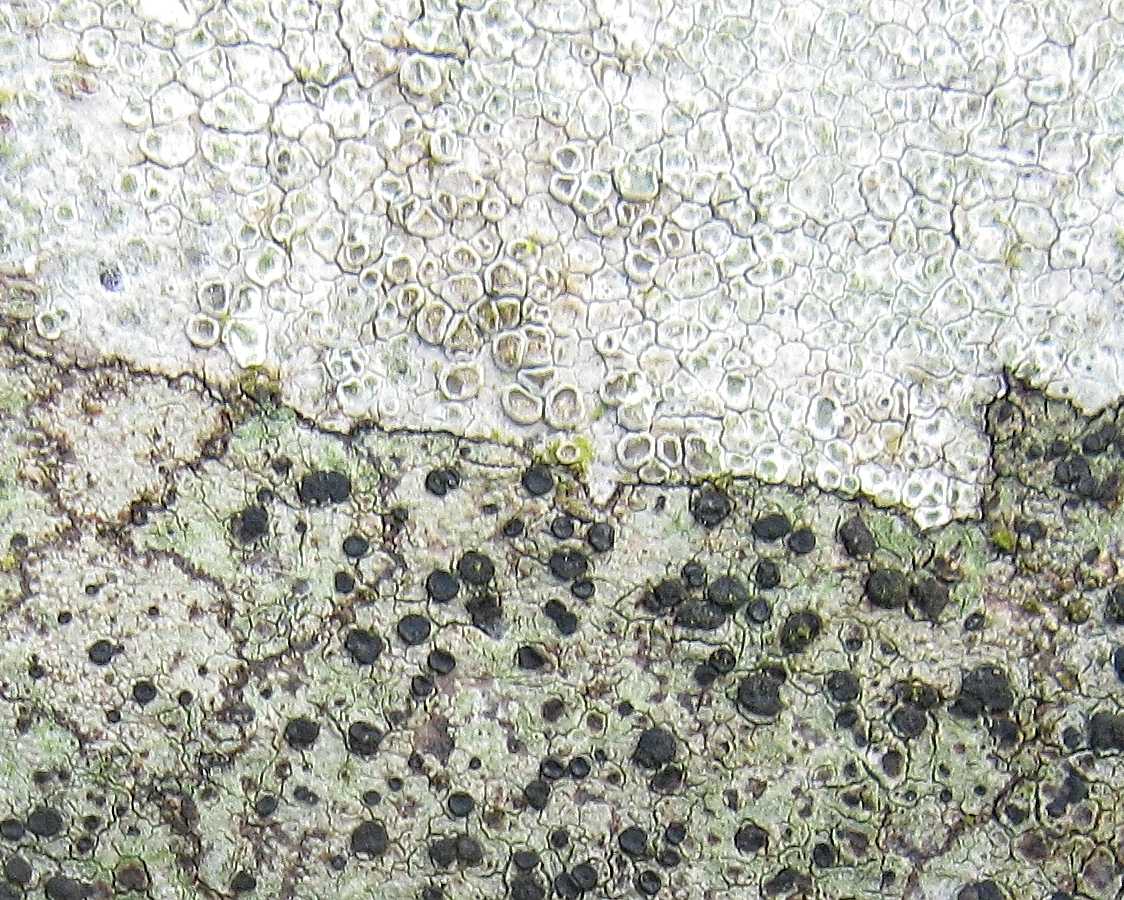
Lecidella elaeochroma (below) and Ochrolechia parella (above) © Rob Randall
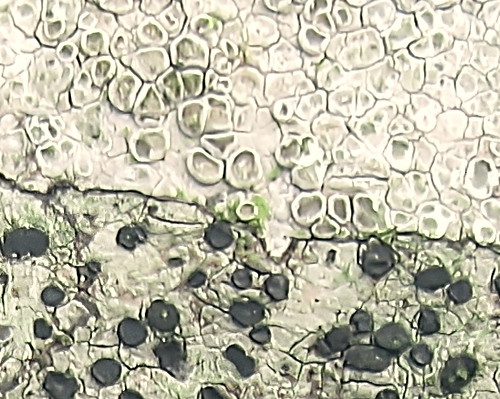
Close-up of Lecidella elaeochroma (below) and Ochrolechia parella (above) © Rob Randall
The smooth bark of Beech trees only suits a few crustose lichens that cling tightly to the surface. The fruiting bodies (apothecia) in family Lecanoraceae are cup-shaped with a rim formed by the main body of the lichen (the thallus) and, as Alan Feest remarked, they look like jam tarts. In the Lecideaceae the apothecia lack a separate rim and are often black. These forms of apothecia are termed lecanorine and lecideine respectively.
A few patches of the Letter Lichen (Graphis scripta) were also spotted. In this case the thallus grows just below the surface of the bark and the fruiting bodies are black branching slits (lirellae). As the common name suggests, they look rather like writing.
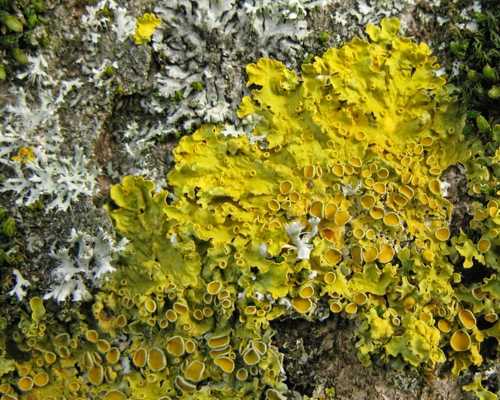
Xanthoria parietina © Rob Randall
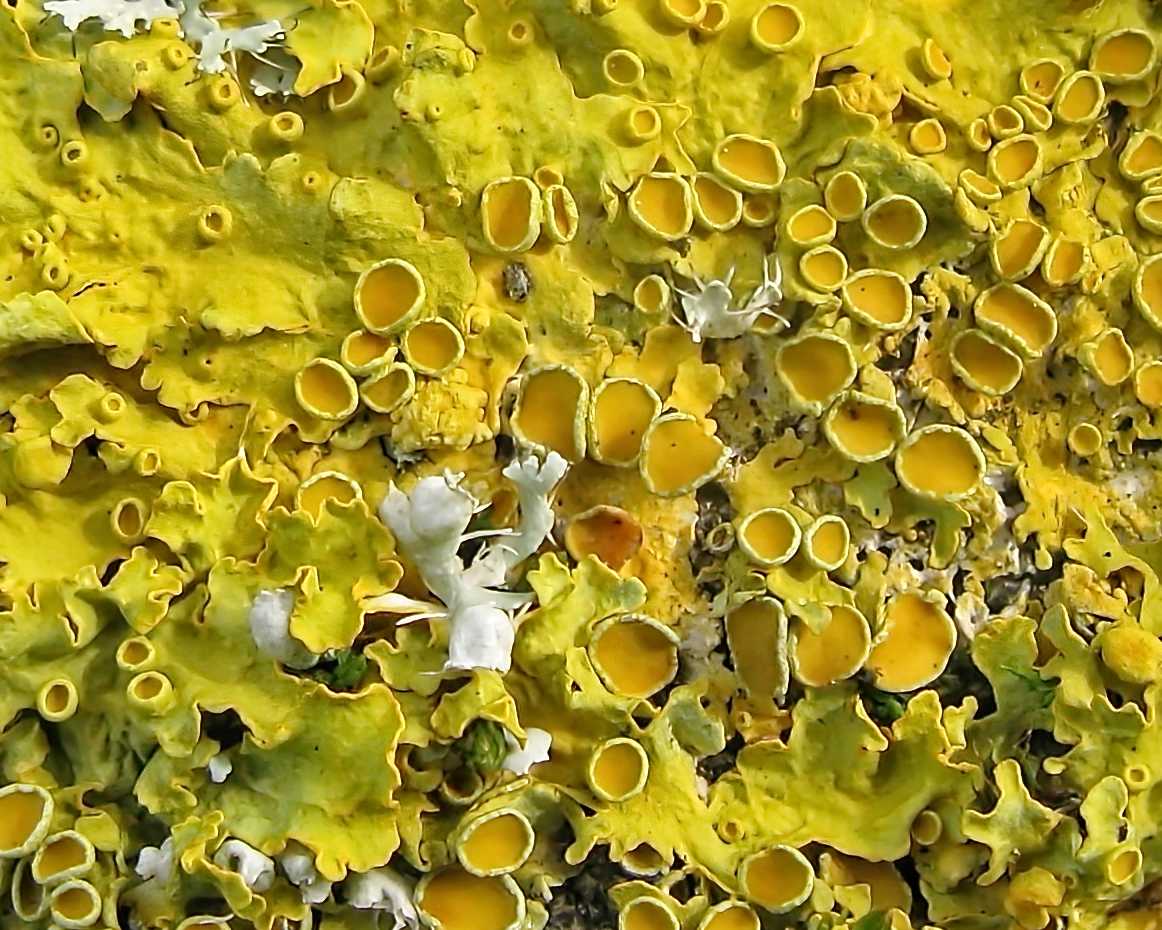
Close-up of Xanthoria parietina © Rob Randall
On the rough-barked trees there were plenty of leafy (foliose) lichens, the commonest being Xanthoria parietina. Leafy lichens are attached in the centre but the margins are free and the underside is usually different in appearance. Another was Physcia adscendens (see photo of X.parietina). It has branching finger-like lobes and mostly spreads by means of powdery granules (soredia) which drop off and form new plants. In this species the soredia develop under a hood at the tip of the branch. Physcia species also have root-like growths (rhizines) which are usually visible towards the tip of the lobes.
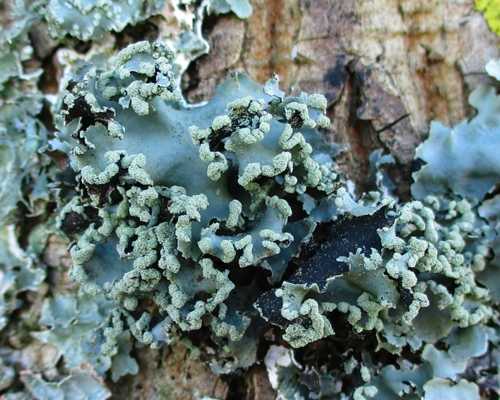
Hypogymnia physodes © Rob Randall
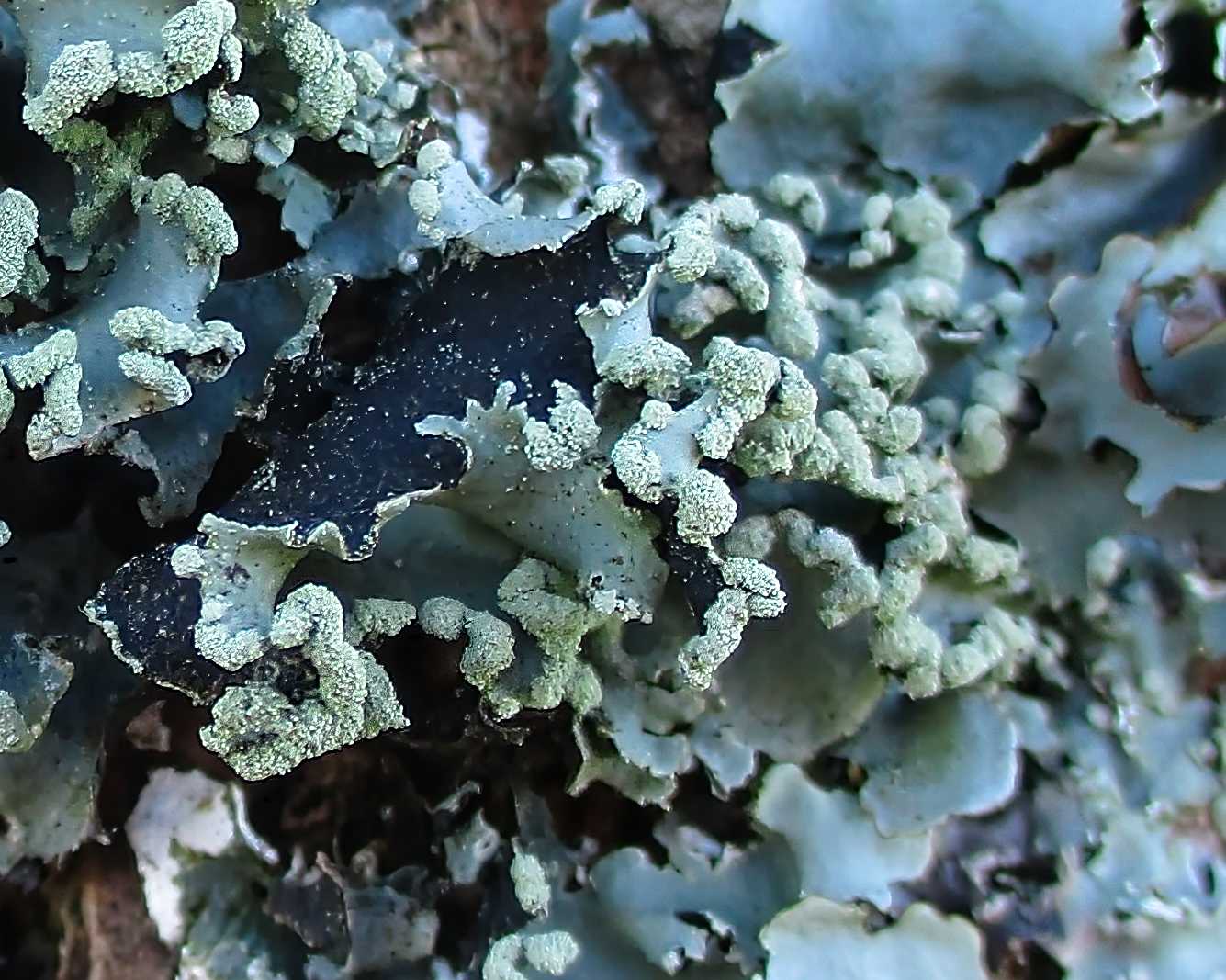
Close-up of Hypogymnia physodes © Rob Randall
Hypogymnia physodes has raised wavy lobes, the edges of which are covered in powdery soredia. This species was common before the Clean Air Act because it could tolerate the high levels of sulphur pollution caused by coal fires but it is now quite scarce.
There were also two grey shrubby (fruticose) lichens: Ramalina fastigiata has stiff bushy branches with disk-shaped apothecia at their tips; R.farinacea is sterile but produces patches of soredia on its flattened flexible branches.
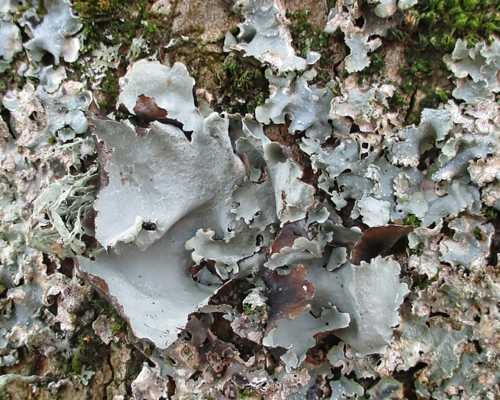
Parmotrema reticulatum © Rob Randall
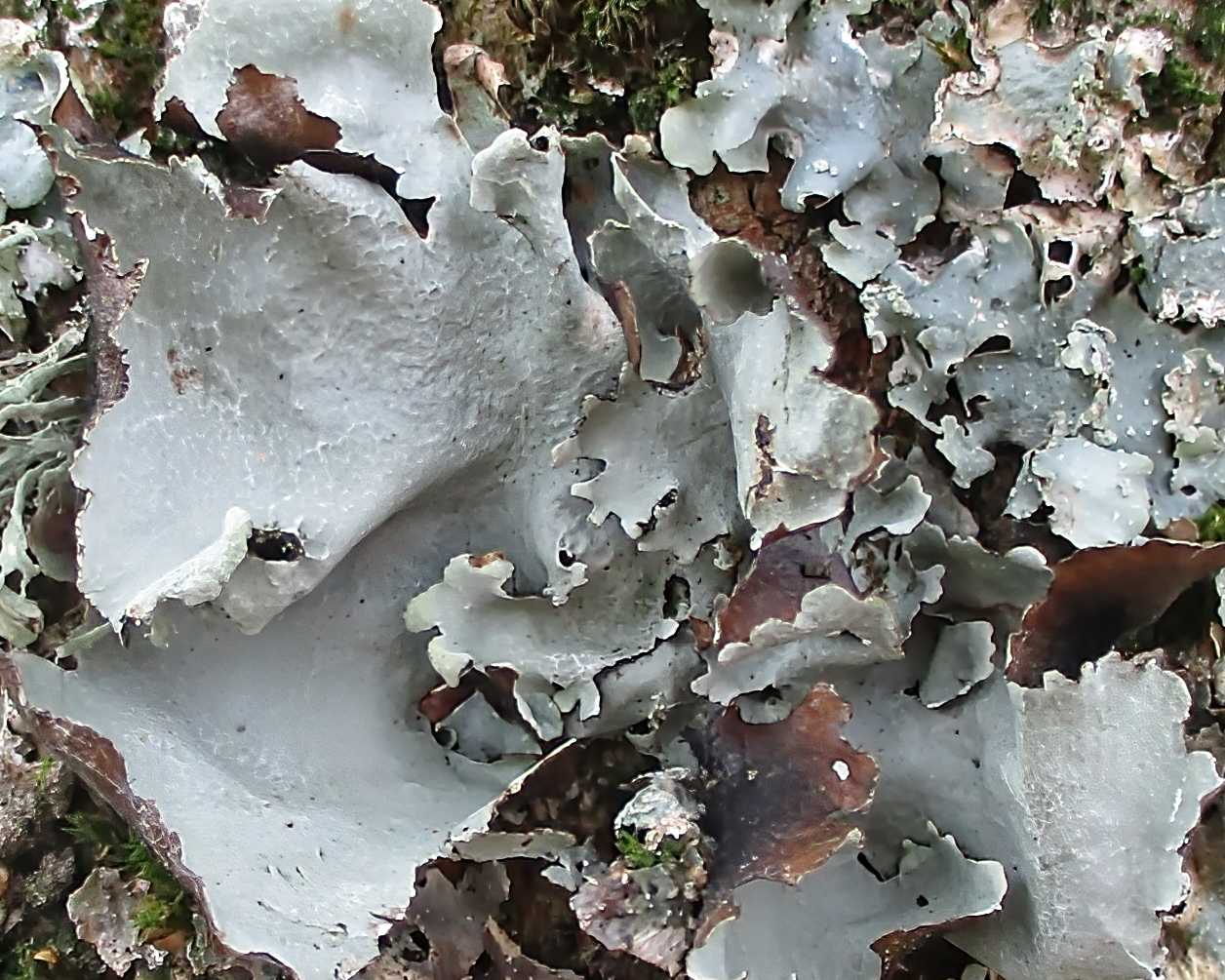
Close-up of Parmotrema reticulatum © Rob Randall
The most surprising find was Parmotrema reticulatum, spotted by Alan Feest. It has large papery lobes covered in a network of fine white lines (hence the name reticulatum). First record for the Bath area of a species associated with areas of low rainfall.
Reversing direction to look at bryophytes did not improve the bite of the wind and Marion needed to make liberal use of the water spray to revive the wind dried bryophytes. A recce had revealed 14 species including two liverworts. The most spectacular of these was the Small Hairy Screw-moss (Syntrichia laevipila) with its abundant curved capsules sticking out from the tree bark. On the same tree we found Marble Screw-moss (Syntrichia papillosa) with its marble like gemmae arranged down the midrib of the leaves. We admired the Lateral Cryphaea (Cryphaea heteromalla) present in several stages of growth including well grown clumps with sessile cigar shaped capsules looking so different from the worm like growths of the younger colonies. The two liverworts were found growing together- Dilated Scalewort (Frullania dilatata) being mainly brownish overlapping scales in contrast to the green ribbon like thallus of Forked Veilwort (Metzgeria furcata). But by now everyone was thoroughly chilled, so a swift decision was made to call a halt to further field observations and study bryophytes from the comfort of a warm armchair!
Rob Randall

Recent Comments